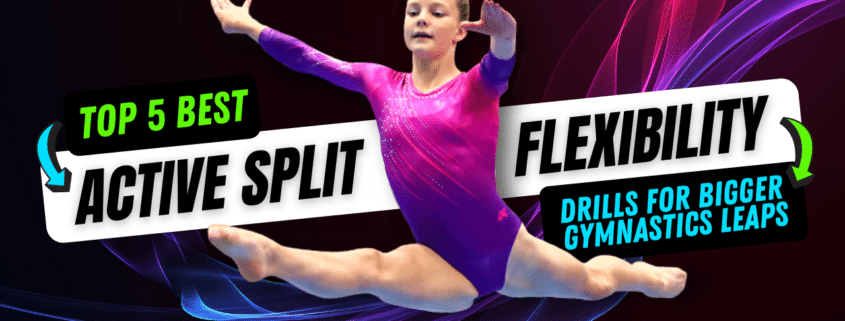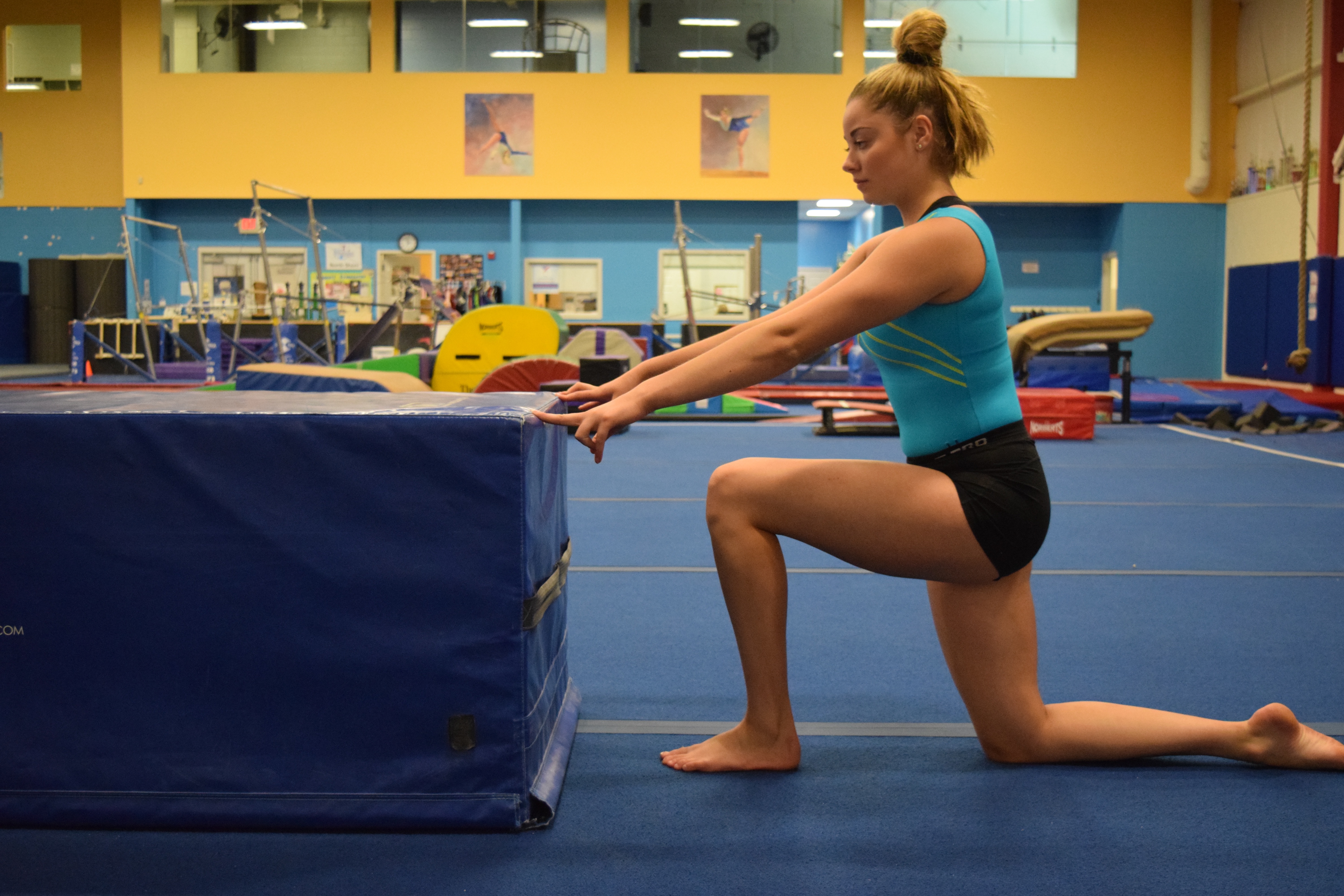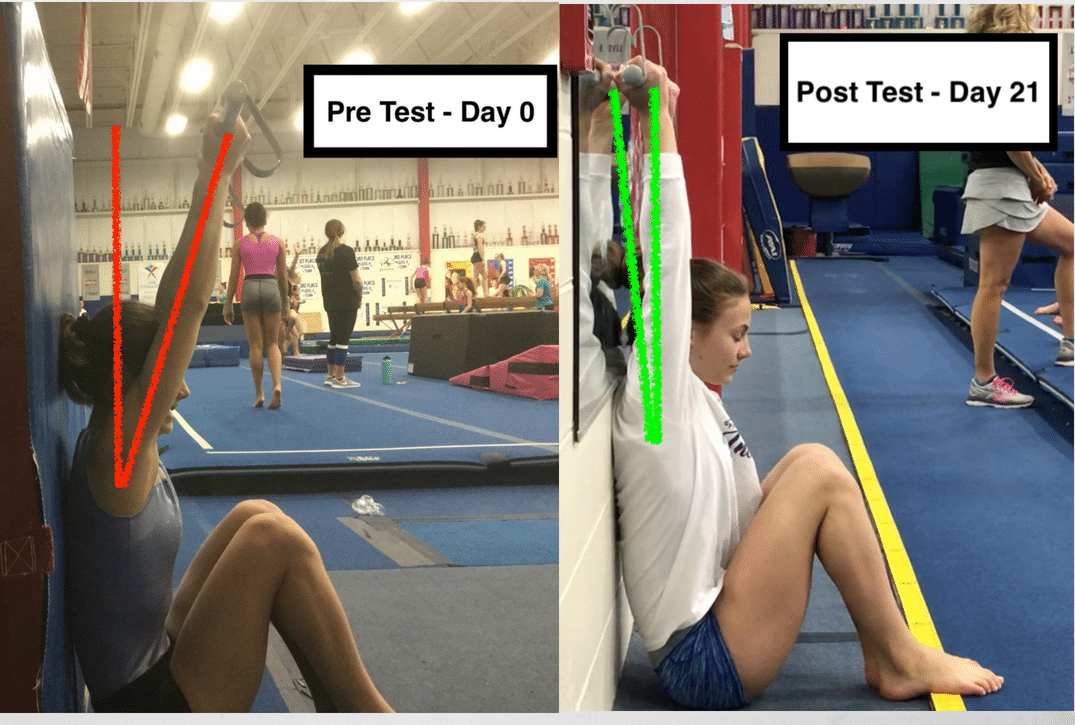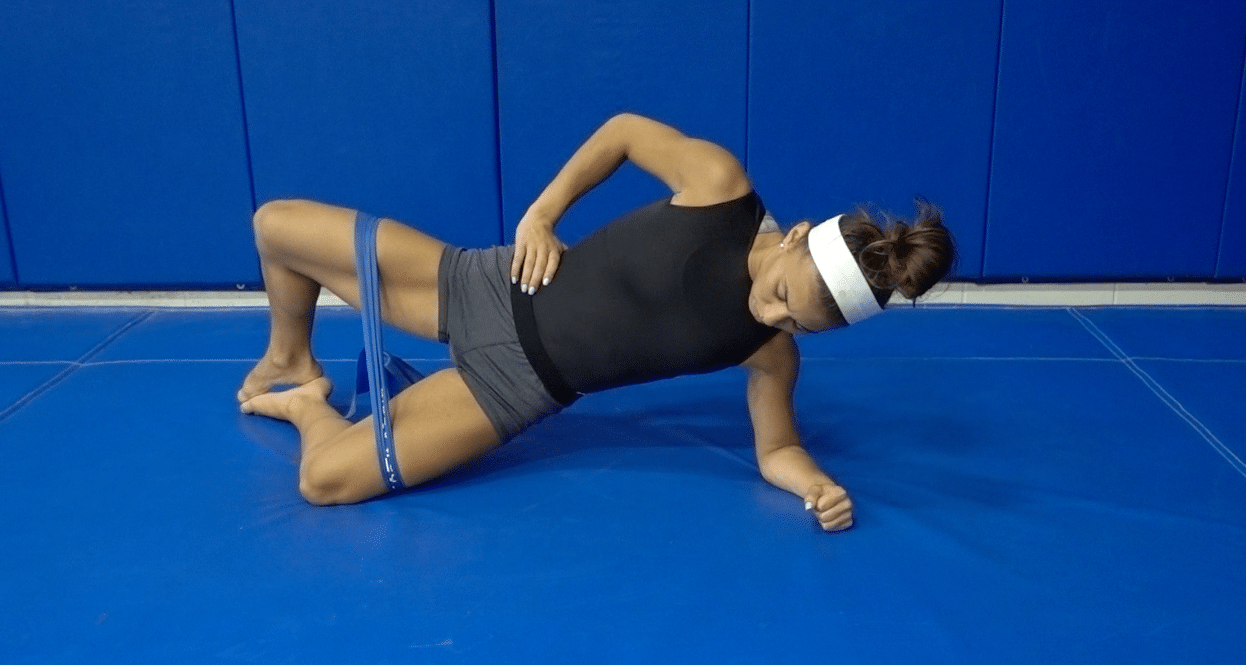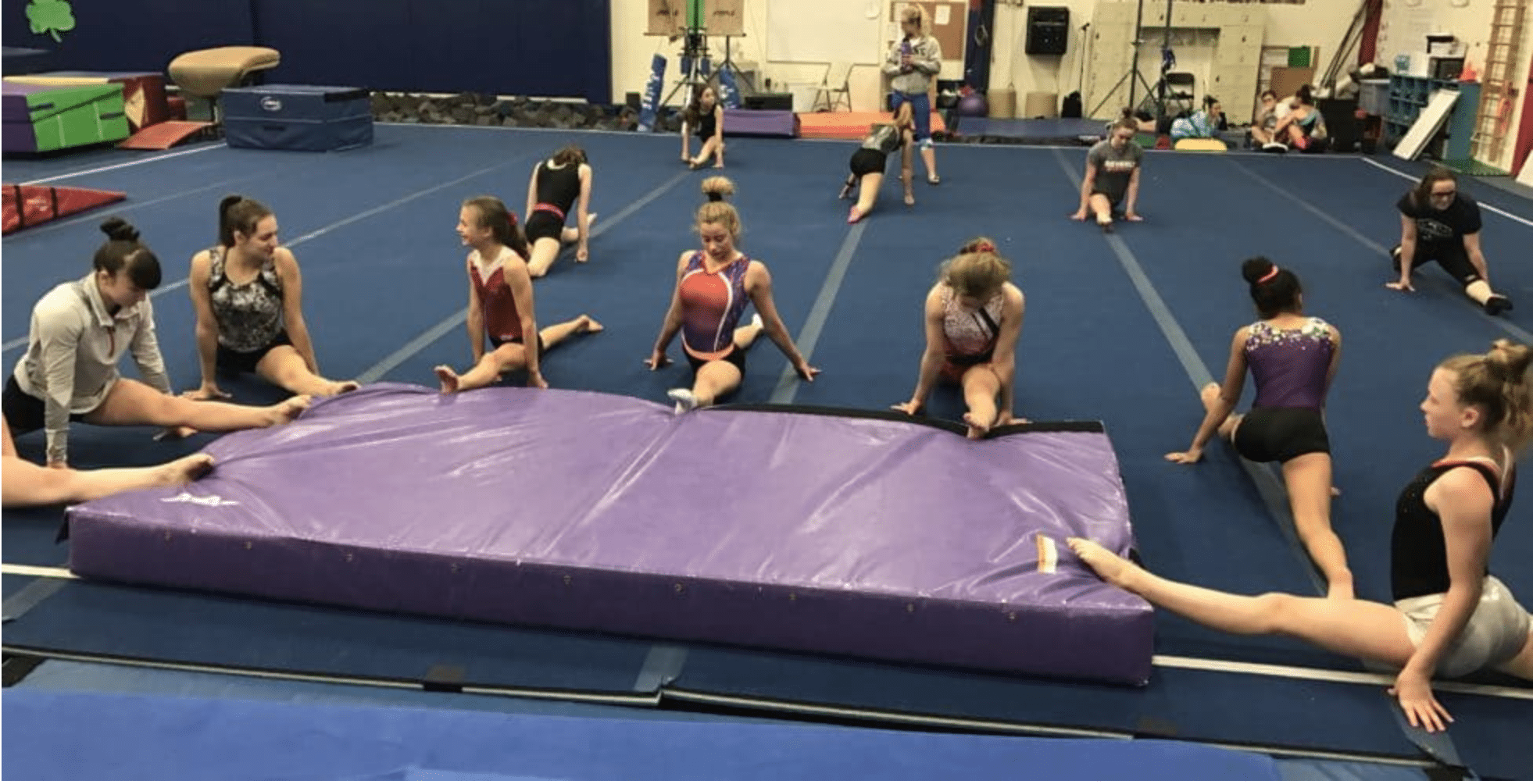The Top 5 Best Active Split Flexibility Drills for Bigger Gymnastics Leaps
Split flexibility is essential for gymnasts if they want bigger jumps and leaps. But, just doing static split stretching isn’t enough to see progress and get jaw-dropping levels of flexibility to show up in skills.
Jumps, leaps, dance elements, and skills require a massive amount of power, strength, and control to get full angles and incredible lines that look effortless. To bridge the gap between what a gymnast has for passive flexibility, and what actually shows up in skills, active flexibility drills are the best.
I’ve been fortunate to work with 1000s of gymnasts and gymnastics coaches in the last 10 years for various flexibility problems. Almost every time they ask, “Okay, I know active flexibility is super important…but there are 100s of exercises online. Which ones should I use, and how many should we do?”
So, to help out I wanted to write this quick blog post sharing 5 of my go-to, ‘must have’ split active flexibility exercises. These are ones that I’ve successfully used with 1000s of club, college, and elite gymnasts.
Table of Contents
1. Leg Lowers
While leg lowers could technically be put in the ‘stretching’ bucket, I personally have never found a better active split flexibility drill for splits. It’s super easy to use and teach to young gymnasts. All you need is something elevated to lay on.
Leg lowers work the front leg’s hamstring flexibility, as well as the back legs hip flexor/quad flexibility. It also involves the core during movement. This is exactly what we are looking for in an active flexibility drill. I usually shoot for 2 sets of 10 on each leg in a warm-up, as a side station, or during a flexibility circuit.
2. Eccentric Split Sliders
If you look at the research it seems that stretching or more traditional gymnastics flexibility work doesn’t work because we are actually making muscles longer (research here, here, and here). It’s more likely that we are increasing the ‘tolerance’ to the discomfort of stretching, which over time desensitizes the nerves and the brain, and improves the range of motion.
In contrast, new research supports that doing eccentric type exercises actually may increase components of the muscle over time (research here and here). Eccentrics are when a muscle is contracting, but lengthening at the same time. Think about the lowering, ‘on the way down’, part of a chin up. That is an eccentric contraction for the muscles below the shoulder joint, the lats.
So, based on this newer science, I love adding in eccentric type exercises for improving splits. It really makes a huge difference when consistently done. My favorite is doing eccentric split slide-outs using furniture sliders, a foam roller, or socks on a hardwood floor. I go for 2-3 sets of 5 repetitions, with a 5 second lower and a 5-second bottom position hold.
3. Resisted Band Kicks
Another super-effective type of active flexibility drill, that is also super easy to use, is band resisted kicks. These are my preferred method of offering resistance, instead of ankle weights, as ankle weights can provide an enormous amount of stress on the hip joint that is a bit risky.
Interestingly, work by gymnastics researcher Dr. William Sands reported is quite an eye opening about the effectiveness of band work. During an experiment using band resisted kicks for improving flexibility in national level gymnasts, the bands were so effective in improving range of motion they had to stop the study because the group of gymnasts NOT doing the banded kicks were getting jealous.
I personally find the best way to start banded kicks is lying down. It’s easier for younger athletes to control their body tension, and it takes to balance out of the equation. As they progress, you can progress to standing versions or more complex movements within dance circuits. I have found that 2 sets of 10 in a warm-up are the best ways to squeeze them in.
4. Front and Back Leg End Range Lifts
A very common problem that people come to me with is gymnasts not being able to lift the front or back leg to the very end range of their motion for a full leap or jump angle. It’s those last ranges that are often the hardest to achieve, and unfortunately are the biggest areas of deduction during competition.
To help out with this, I’m a huge fan of adding in some drills that very specifically target that last bit of motion. For the front leg, I love kneeling hip lifts using a block or beam for balance. For the back leg, I love curled-up hip lifts to really force a gymnast to use their glute muscle and not their lower back. As with the kicks, 2 sets of 10 during a complex seem to be the most effective approach.
5. Leg Drivers
As great as all the slower, more specific drills above are, at some point, we need to really focus on the ‘explosive’ part of active flexibility work. Like I mentioned at the start, getting full jumps and leaps really comes down to strength, power, and control. So leg drivers are a great way to develop this.
It not only requires the bottom leg’s hamstring/glute to work super hard to lift the athlete’s body up, it also requires a ton of core strength. Lastly, it puts the athlete fully against gravity, so they are really working hard to reach their angles. Depending on the athlete and their ability, a few sets of 5-10 on each leg are a good starting point. For advanced athletes, you can add on the theraband for extra resistance.
Want To Learn Exactly What Flexibility Drills I Use With Gymnasts?
Gymnastics flexibility as a whole can be incredibly overwhelming and frustrating. Between the insane amount of flexibility information online, not having enough time/space in the gym when working with a group of 15 kids, and all the confusing science, it’s enough to throw your hands up and say ‘forget it’.
I know how brutal it can be trying to learn the most effective and safest flexibility drills that actually work and are easy to use. So, to help out the gymnastics community I have put together an exact step-by-step guide on how to skyrocket gymnastics flexibility for bigger skills, higher scores, and less injuries. It is called the Gymnastics Flexibility Blueprint course, and after 10 years of work, it is officially open for public enrollment!
This course will give you everything you need to know from the best stretches and exercises for right/left splits, straddle splits, shoulder flexibility in handstands, pikes, pancakes, wrists, ankles, and more.
Our goal is to make your life easier and less frustrated, so we included a full course workbook, exercise library, and flexibility circuit “cheat sheets” for you to use right away. Not to mention, a huge private discussion group so you can ask and question you want on gymnastics flexibility, training programs, and more.
We are so excited to finally be launching the course, so be sure to dive in!
https://shiftmovementscience.com/gfbcourse/
Have a great week,
– Dave
Dr. Dave Tilley DPT, SCS
CEO/Founder of SHIFT Movement Science

